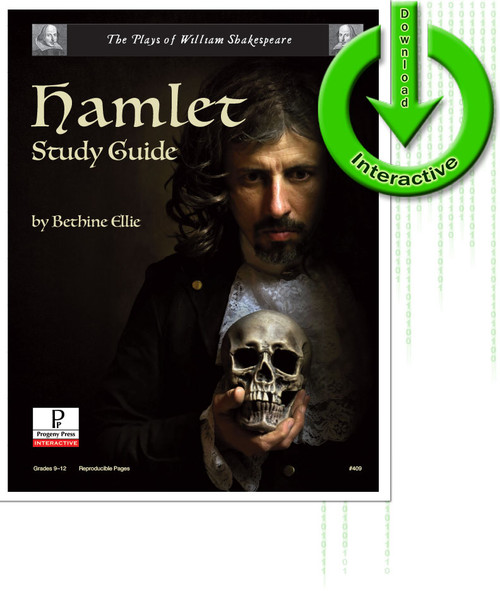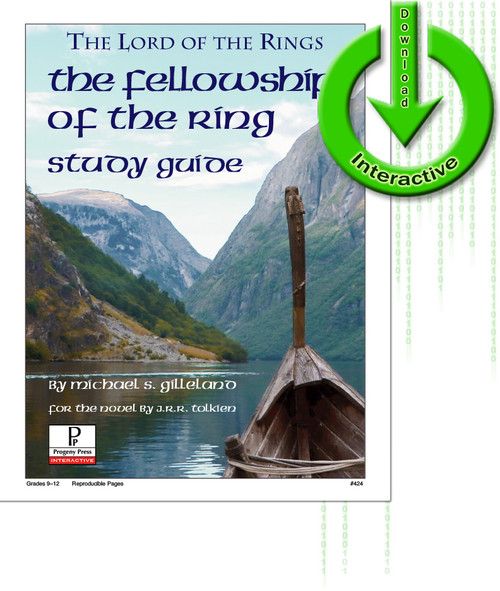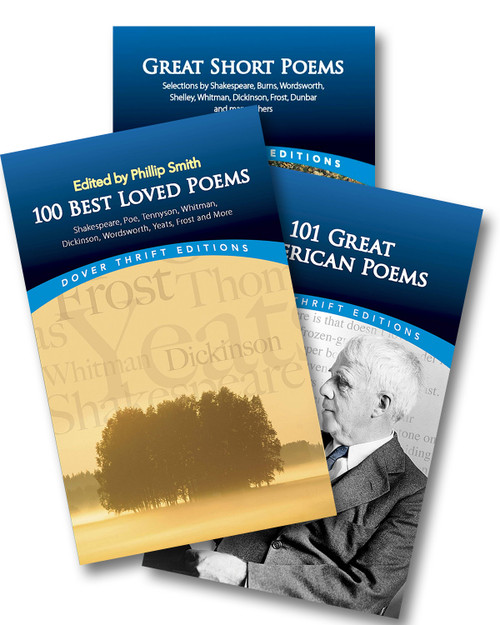Description
Poetry, in many ways, defies definition. Any restrictions would disqualify some works that are, nevertheless, poetry.
The only statement about poetry that we can make with absolute certainty is that good poetry uses what is known as "compressed language." That means that it says a lot but uses few words to do so. Every word is very valuable; the poets make their choices only after much deliberation, and we must understand each word to grasp the meanings of the poems. This word compression is the primary reason that most students claim not to understand poetry. Students who are accustomed to skimming over their lessons once and dashing off correct answers in record time will find that poetry asks much more of us than this. It invites us to calm down, sit still, and think.
Using three short poetry anthologies, this study guide examines more than 40 well-known English-language poems, introducing the student to techniques such as rhyme and meter and various poetic forms such as the sonnet, the villanelle, the ballad, and more.
Progeny Press' English/Language Arts PDF curriculum will provide your High School grade student with:
Types of Poetry: Explore the diverse styles of poetry, including narrative poems, lyric poems, and dramatic poems.
Elements of Poetry: Uncover the building blocks of poetic expression, from lines and stanzas to words, impressions, sounds, rhyme amd slant rhyme, sibilant, common meter, poetic foot, iambic tetrameter, iambic trimeter, imagery, analogy, and tone.
Forms of Poetry: Journey through various poetic forms, including Petrarchan or Italian sonnet, Shakespearean or English sonnet, octave, sestet, couplet, villanelle, blank verse, haiku, ballad, limerick, terza rima, tercet, parody, Petrarchan conceits, and the use of free verse.
Literary Techniques: Explore enjambment, denotation, connotation, diction, alliteration, assonance, onomatopoeia, theme, poetic license, simile, metaphor, personification, paraphrasing, allusion, explication, narrative, and quatrains.
Moral Lessons and Character Values: Reflect on decision making and prayer, the interconnectedness of loving God and neighbor, the celebration of inner beauty over materialism, the wisdom to use time judiciously, recognition of the Trinity, addressing hypocrisy, finding grace in weakness, contemplating death, embracing peace, serving one another, finding contentment, respecting authority, and fostering hope.
Activities and Writing Assignments: Research Elihu Burritt. Writing activities include connotations, couplets, senses, feelings, haiku, limerick, parody, sonnet, villanelle, ballad, terza rima, free verse. Paraphrase a poem and then write an explication of the same poem.
Suggestions for Further Reading: We include an in-depth reading list of more poetry by the same author(s) and other books that tie in with, or are similar with the poems studied.
All of Progeny Press' language arts PDF download unit lessons are written from a Christian worldview!
Features and Benefits of a Progeny Press ELA PDF study guide
Digital PDF Download
- PDF files are available to download with no shipping costs
- Contains the complete study guide in universally compatible PDF format (works on Mac AND Windows)
- No costly software purchases necessary
- PDf files open in the FREE Adobe Reader program.
Note: Mobile devices may require an alternative app that supports and saves fillable form fields and interactive features. - Conveniently print what you need, when you need it:
- Print the whole ELA study guide at once
- Print single literature lessons or pages as the student completes them
- Print multiple copies of the entire curriculum study guide for classroom sets
- Upgraded, fillable form fields allow the student the opportunity to complete their work on the computer, saving you printing costs
- PDF format makes it easy to use with multiple students
- Complete answer key PDF file included for the teacher to make grading simple!
Formatted with your High School grade student in mind, Progeny Press language arts study guides divide the book into writing assignments and lessons that strengthen their reading comprehension, vocabulary, and refine their critical analysis and writing skills. Each Progeny Press novel study accomplishes all of this without busy work that can drain the fun out of reading and literature! Kids have loved using Progeny Press ELA curriculum in homeschool, co-ops, and private schools around the world for over 30 years!












